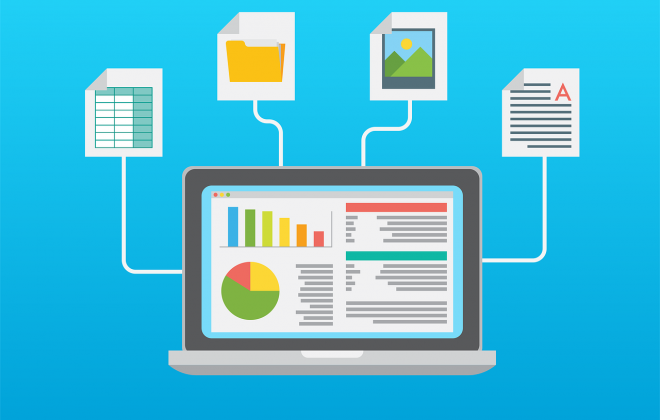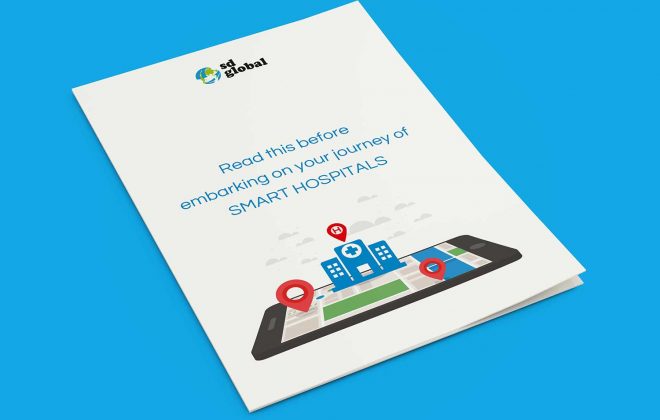Here Is Why I Am Excited About These Digital Transformation Trends in Healthcare
Healthcare is not a mute spectator in the conversation regarding digital transformation. The healthcare ecosystem has been fast to adopt technology to navigate the unique challenges of this industry, become more efficient and ultimately impact the bottom line in a positive manner. While digital transformation is essentially the application of technology options to improve productivity and efficiency across the length and breadth of an organization, in the healthcare sector, it also is a whole lot more.
Digital transformation in healthcare is not just about efficiencies but also about how these efficiencies impact the consumer of healthcare, the patient. It is all about operational process improvement so that it becomes automated, more efficient, cost-effective and also affordable. We can expect seamless data management, improved patient response times, better internal communication, and better health data management, an integrated approach to patient care, enhanced innovation capacity and consequently better patient outcomes. Digital transformation is focused on information handling and how this information that is gathered from a plethora of modern digital devices is channelized and utilized effectively.
Let’s take a look at some of these digital transformation trends making waves in the healthcare sector.
Big Data and Genomics
Big Data has cemented its position as a great enabler of profound insights across industries. Healthcare is no different. I am excited to see the use of big data in the field of Genomics, the study of complete genetic material (genome) of organisms. Genomics involves the sequencing, mapping, and analysis of a variety of DNA and RNA codes and is being used in the human context to map and analyze genes and their interactions. Genomics presents huge volumes of data owing to the sequencing, mapping and analyzing activity given that each human genome consists of over 20,000-25,000 genes and comprises of more than 3 million base pairs. Sequencing these genomes adds up to petabytes of data and the analysis of the same only further adds up the numbers incrementally. Leveraging Big Data analytics in Genomics, we can lay down the foundation of predictive medicine and also assist in determining the most appropriate treatments. Further, with Big Data, healthcare organizations can combine sequenced genomic data with other medical data to get better disease prediction capabilities, design predictive models to identify at-risk patients, guide clinical trials more precisely, and provide more targeted treatments.
Cloud and Mobility
Cloud is bringing in a new era of efficiency in the healthcare sector. It is the instrument that is changing the way healthcare is delivered by increasing accessibility for both patients and doctors. It is estimated that by 2018, 65% of interactions with healthcare facilities will happen over mobile devices. The cloud is effectively replacing the traditional paper charts and file rooms them with electronic health record management systems that store all patient-related information in one place with anytime, anywhere access. Hospital Management Systems have also become more efficient leveraging the cloud and today we are looking at cloud platforms that are helping hospitals improve the performance and reliability of existing IT systems and consequently establish a better relationship with their patients by providing better care coordination. Enabled further with mobility, these platforms help in increasing patient engagement levels and improve the quality of care and help in positively impacting the bottom line.
IoT and Wearables
IoT and Wearable devices today are emerging as the new face of healthcare with the promise of endless opportunities. These devices are not only helping people in tracking and maintaining their fitness but are empowering people in their own health management. It is estimated that in the US alone almost 40% more organizations will implement the use of wearable tech such as smart hearing aids and eyewear, biosensors, chest straps, implantable etc. These devices will automatically measure the healthcare parameters on a regular basis and intimate the patients and send out alerts in the case of irregularities by entering the results into mobile patient portals. These results can also be transmitted to the doctors in real-time and ultimately help in saving lives.
AI and Robotics
AI is no longer science fiction. Today, AI and Robotics are getting increasingly sophisticated and adept at doing what humans do. While AI and Robotics will not replace the human physician, at least will not do so just yet, these two technologies are gaining a strong foothold in the healthcare industry. AI algorithms are becoming stronger and more robust and are helping healthcare practitioners provide faster and more accurate diagnosis, make better health predictions and enabling better decision making.
Robotics is being leveraged in the operating room and also to perform a wider variety of tasks and functions such as in labs for conducting repetitive works, patient rehabilitation and to provide support to those who have long-term conditions. A good example of this would be the RoBear, a nursing-care robot that can lift and move patients in and out of bed into a wheelchair, turn patients to prevent bed sores, and provide assistance to those who need to stand. These robots such as the RoBear, Xenex (a robot that disinfects hospital facilities), Veebot (a robot that helps draw blood faster and more safely than a human), and others are all being powered by AI. AI combined with the advancements in humanoid design is helping these robots have ‘conversations’ and social interactions and therefore helping these robots become an integral part of the healthcare ecosystem.
It is without a doubt a very exciting time for the healthcare sector and it will be interesting to watch how these trends mature and play out in the very near future.




